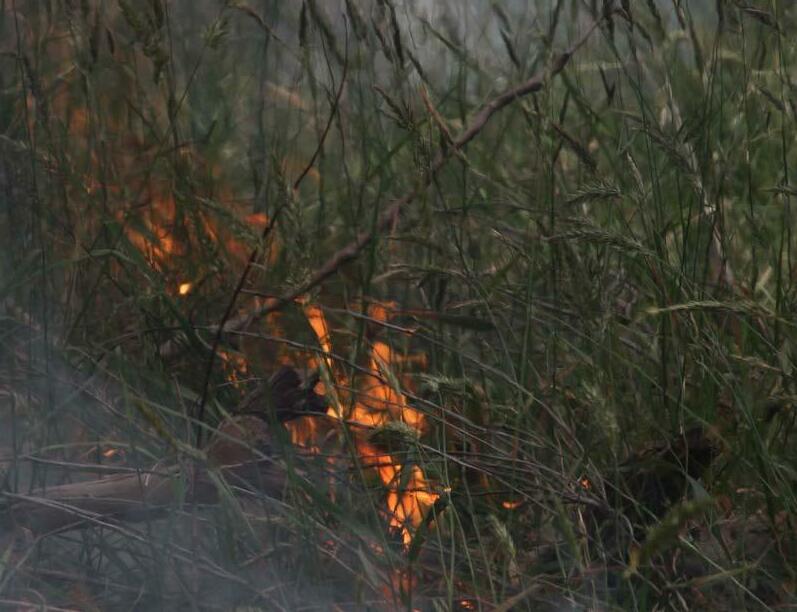
4 minute read
Safety of alternative and renewable energy technologies
Renewable technology is becoming increasingly popular, but not much is known about its safety. A new research program, led by Fire and Rescue NSW, is looking at how to minimise the risks of these technologies as governments push towards net zero emissions by 2050.
KIM THAI
Fire and Rescue NSW
PAUL WATERHOUSE
FPA Australia
Late last year, the Australian Government committed to a net zero emissions target by 2050. Twenty billion dollars were earmarked to support renewable and low emissions technologies, such as carbon capture, clean hydrogen, solar power and energy storage.
Energy storage, particularly in the form of lithium-ion batteries (LiBs), has become almost ubiquitous over the last decade, and is increasingly used and accepted in a range of applications across the commercial, residential and transport sectors.
However, with higher usage comes higher risk, and there has been a noticeable uptick in reported LiBrelated fires and casualties worldwide.
While such incidents are still not common, they are creating some alarm. We are trying to learn more about their potential causes and consequences, such as increased dangers for firefighters and increased propensity for explosions. In January 2022, one in a hundred calls to Fire and Rescue NSW (FRNSW) involved a battery in thermal runaway (where a fire escalates until it is uncontrollable).
Some of the potential difficulties and dangers from a LiB-related fire include: higher fire intensity exposure to toxic gases and effluents increased risk of explosion in confined environments stranded electrical energy protracted processes for extinguishing and cooling the reaction the risk of secondary ignitions difficulties rendering the site safe the containment of contaminated fire water issues with handling, transporting and disposing of fire-affected batteries.
To better understand these issues and Energy storage, particularly in the form of lithium-ion batteries (LiBs), has become almost ubiquitous over the last decade, and is increasingly used and accepted in a range of applications across the commercial, residential and transport sectors.
risks, FRNSW is leading a collaborative research and testing program largely focused on energy storage: Safety of Alternative and Renewable Energy Technologies (SARET).
This program will see the brigade partner with the private sector, government, tertiary and research institutions and other fire services to avoid duplication of effort and to get the most out of its research investment.
A significant focus of the program will be to investigate ways to mitigate the risks of LiB-related fires and to identify the most effective methods for managing them.
FRNSW and partners such as FPA Australia hope that better methods and standards can be developed through this collaborative approach. These improvements will protect the community and ensure that energy storage is a safe, viable solution that will help achieve the zero emissions target.
For enquiries regarding the research or partnering with FRNSW, contact research@fire.nsw.gov.au.


Program 1: Fire service response to LiB-related fires
Assessing the effectiveness of new and existing agents, products, and delivery systems for use in fires involving Lithium-ion cells, batteries and battery systems, in comparison with water. Providing guidance on the efficacy of current personal protective equipment and clothing in protecting firefighters from exposures to gases, vapours, liquid electrolytes, chemical residue and electrical energy present in LiB-related incidents.
Program 2: End-of-life LiB hazard management
Informing the management of hazards related to battery recycling, and the handling, storage and transportation of damaged and fire-affected lithium-ion batteries and battery systems to minimise first and second responders’ risks of exposure and secondary ignitions.
Program 3: Electric vehicle fires in structures
Looking at the unique challenges of electric vehicle fires in parking garages and car parks, aiming to quantify the differences between battery-electric vehicles and conventional vehicles with respect to fire severity and propagation, building performance, detection and suppression requirements, air handling and ventilation, access, and charging effects.
Program 4: Fire propagation in battery energy storage systems
Providing a better understanding of the fire propagation behaviours of various battery energy storage systems to inform guidance on separation, detection and protection requirements for new installations, from residential-sized to commercial and grid-scale applications.
346539 - Redmen Ad 130x185mm 29.01.21.pdf 1 1/29/21 9:26 AM
LET’S JOIN FORCES!
What could your company achieve with more financial support?
Have you considered, a supportive business partner to share the load?
We are looking to join with professional fire protection and training companies through mergers or acquisitions. We understand the mindset of small – medium business and can provide the needed support to achieve corporate and personal Goals.
Lets have a chat about your needs and how we can assist.
Our company valuations are very generous and well above market norms.
Why not??? Call now for an open preliminary discussion!!!
Please call or email
Mike Donegan 0412 342 474 or thanksmate@redadair.com.au











